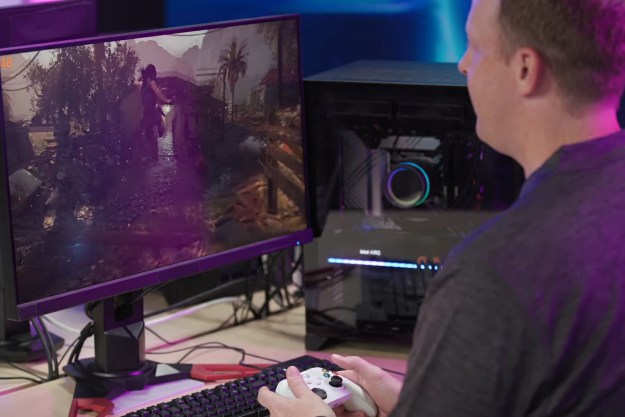
There are few narratives tech journalists love more than a good David-and-Goliath story. Many of today’s most important technologies and companies were born from humble beginnings before growing into the giants we know today. The Internet was the baby of dedicated researches, Apple grew out of a garage, and Google was founded by a pair of graduate students. Technology wouldn’t be where it is today without the power of new technology that seems to spring from nowhere to overthrow the existing establishment.
But sometimes Goliath is too smart to kill with a slingshot. Such is the case with Intel. Though lacking major announcements, the world’s largest chip manufacturer looks as buff and clever as ever.

Yet it hasn’t. Though the company’s 2012 earnings failed to exceed its record-setting 2011 figures, the company continues to turn a strong profit with one of the best gross margins in the industry. Intel’s products in the PC market solidly defeat those from AMD on nearly every level, sales of high-margin ultrabooks are slowly but steadily increasing, and the company’s fabs remain the most advanced in the world.
Influence is one reason for Intel’s resilience. Amid its CES 2013 announcements the company slipped in a bomb – ultrabooks based on Intel’s 4th generation processors will require touch and Intel Wireless Display. The company tried last year to wrestle power from hardware manufactures with the ultrabook, but no one was sure if the OEMs would roll over. They have. Companies like Acer and Toshiba happily informed us that they plan to add touch to all thin-and-light laptops to make sure they qualify for the ultrabook label.
That is a big win for Intel. If the company can decide what features exist in consumer laptops, it also can make sure those features help the company’s bottom line. OEMs can be nudged towards extras that require or run best on Intel hardware. The company will have to worry less about the pace of innovation because it can dictate what innovation will be.
Intel’s incredible ability to engineer new architectures has also helped to keep the company strong. Though initially slow to react to the mobile revolution, the company has responded with blistering speed. Last year’s CES saw the introduction of an x86 reference platform for mobile, which successfully attracted a number of hardware partners throughout 2012. Intel has reinforced that endeavor with a road-map that includes two product lines aimed directly at smartphones and tablets.

That’s only one fork of Intel’s attack. The other comes from the traditional Core products that have successfully dropped to a power envelop of 13 watts (Intel claimed 7 watts, but the company also changed its measurement metric). We’ll likely see a further reduction in power with the release of Haswell later this year.
If you’re unconvinced by specifications, take a look at the products. Lenovo’s ThinkPad Helix, which is powered by a Core i5 or i7 processor, weighs 1.8 pounds in tablet mode. Other detachable ultrabooks are similarly light. Products like this will compel consumers to ask why they should buy an ARM tablet if their Windows convertible can fill the same role.
Perhaps the best evidence in favor of Intel’s strength in mobile is Windows RT’s no-show at CES. We expected to see a fair number of devices with the new operating system. Instead there was deafening silence. Hardware OEMs repeatedly boasted that their tablets run “full Windows” rather than the stripped-down RT.
New technology can create a wave of creative destruction. That wave is unstoppable – but it can be delayed or channeled. Intel has successfully leveraged its influence over the last year to keep its mainstream computing products relevant while the company invests in technology for the mobile market. Should Intel manage to also become a significant force in mobile, well, that’s game over. No competitor has the resources necessary to compete with Intel’s blistering product cadence once it has established a foothold.
CES 2013 demonstrated that Intel remains influential and is making major advancements in its only area of weakness. Don’t let the lack of a headline-grabbing new architecture full you. This was a strong show for the company, and the year will likely follow suite.
Editors' Recommendations
- No, Intel isn’t blaming motherboard makers for instability issues
- Intel Battlemage graphics cards: release date speculation, price, specs, and more
- I’ve used Intel CPUs for years. Here’s why I’m finally switching to AMD
- We might have an answer to Intel’s crashing crisis
- It just became the perfect time to buy a last-gen Intel CPU


